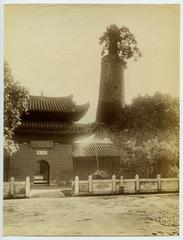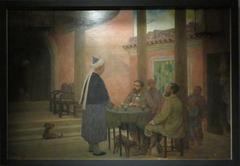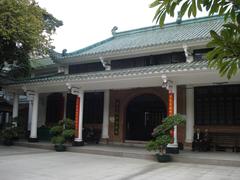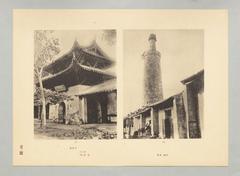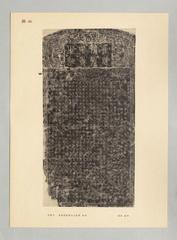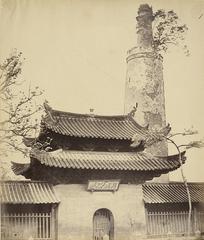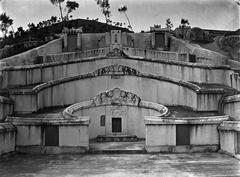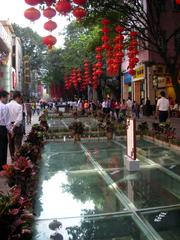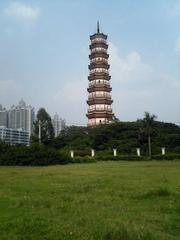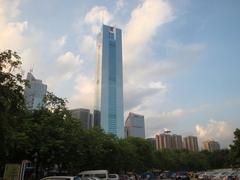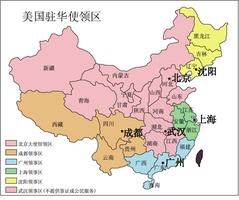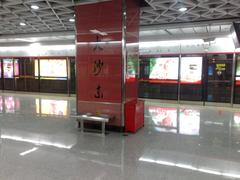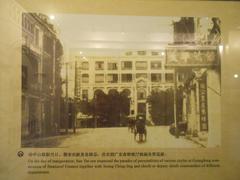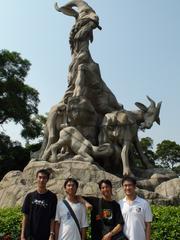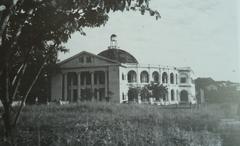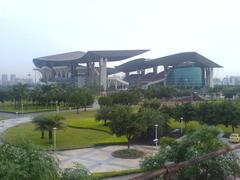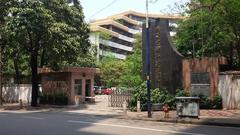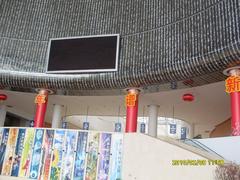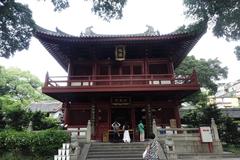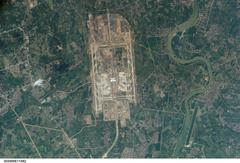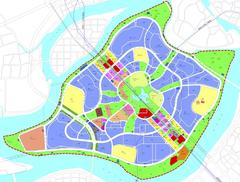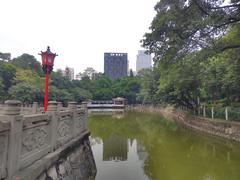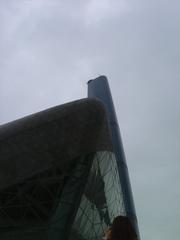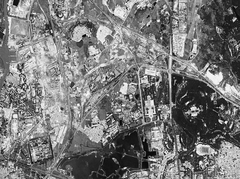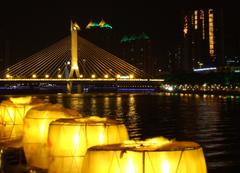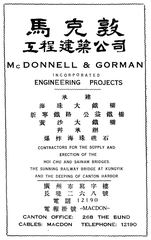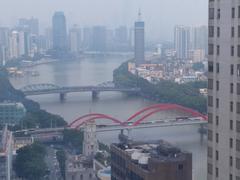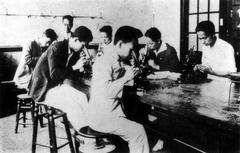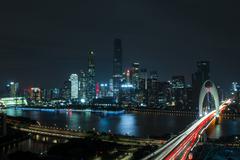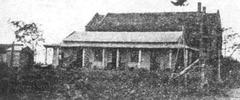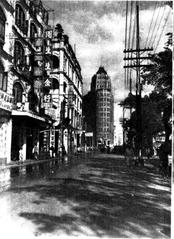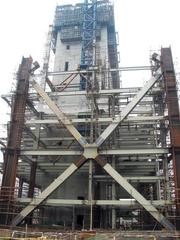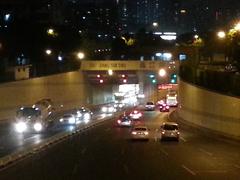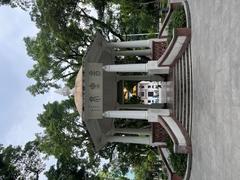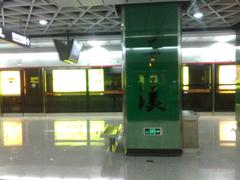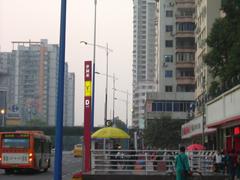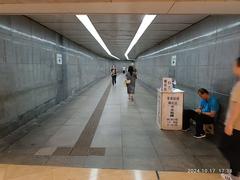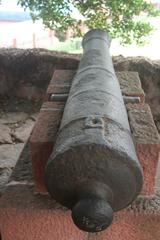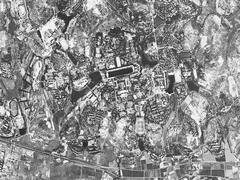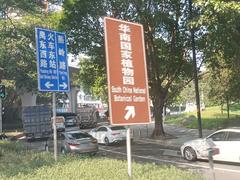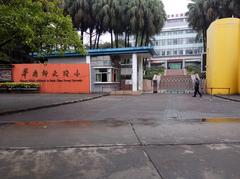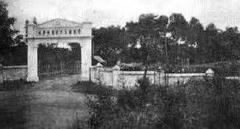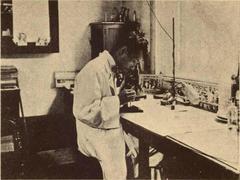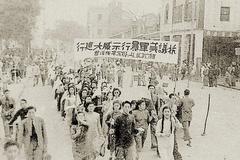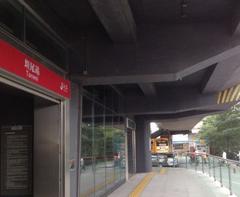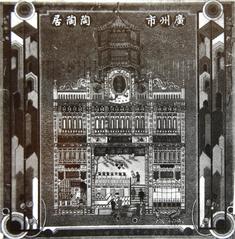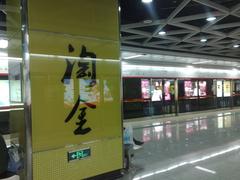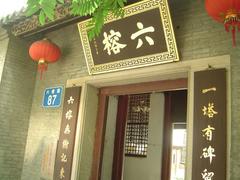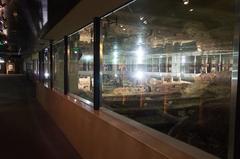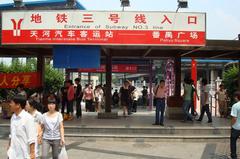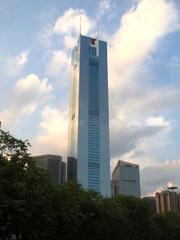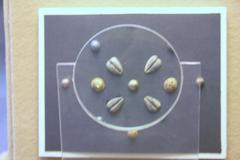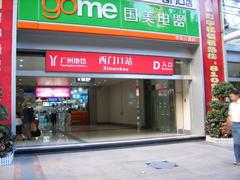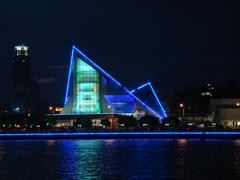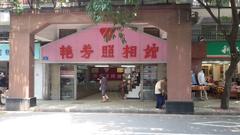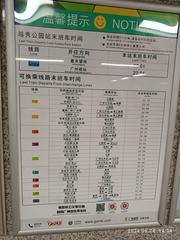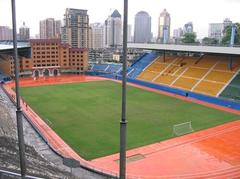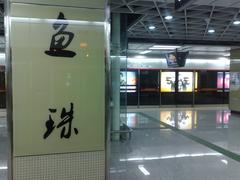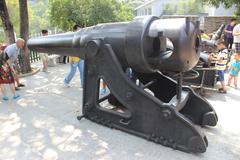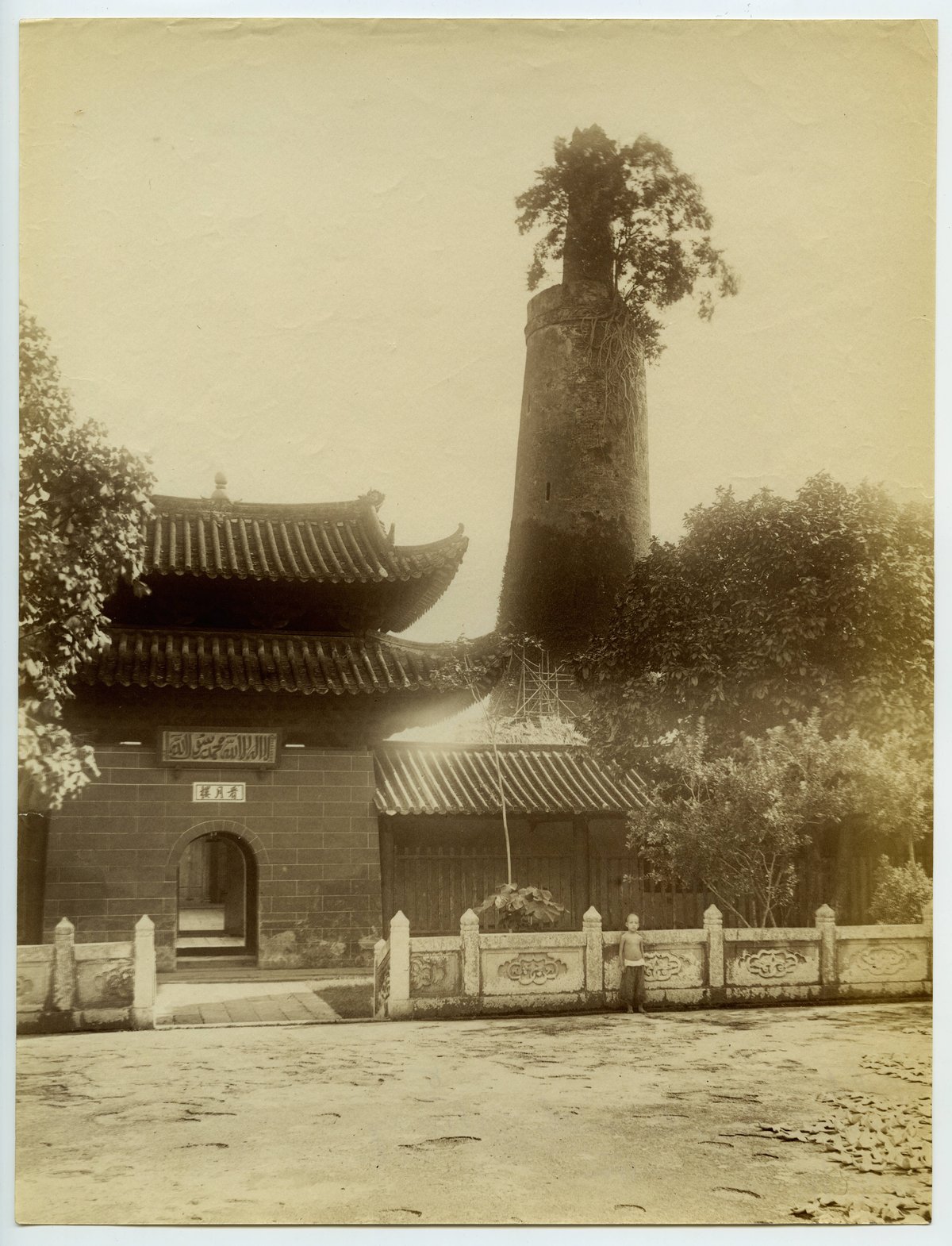
Huaisheng Mosque: Visiting Hours, Tickets, and Historical Significance in Guangzhou
Date: 14/06/2025
Introduction
Located in Guangzhou, the Huaisheng Mosque (怀圣寺)—also known as the Lighthouse Mosque or Guangta Mosque—is one of the oldest mosques in China and among the world’s earliest Islamic monuments. Traditionally believed to have been founded as early as 627 CE during the Tang dynasty, the mosque stands as a testament to centuries of religious, architectural, and cultural exchange between China and the Islamic world. Whether you are a history enthusiast, architecture lover, or cultural traveler, this guide will provide a comprehensive overview of Huaisheng Mosque’s history, architecture, visitor information, and practical tips to enrich your visit (Wikipedia; SCMP).
Table of Contents
- Historical Background
- Architectural Features
- Religious and Cultural Significance
- Visitor Information (Hours, Tickets, Access)
- On-Site Experience
- Practical Tips and Nearby Attractions
- Frequently Asked Questions
- Conclusion
- References
Historical Background
Origins and Foundation
Huaisheng Mosque’s origins are deeply rooted in the history of Islam in China. Local legend attributes its founding to Sa’d ibn Abi Waqqas, a companion of the Prophet Muhammad, during a 7th-century diplomatic mission to Guangzhou. While this story highlights the mosque’s symbolic ties to the early Islamic world, modern scholarship suggests the structure’s current form likely dates from the late Tang or early Song dynasties (9th–10th centuries), due to limited contemporary documentation (Wikipedia; SCMP; Guangzhou Government).
Role in Maritime Trade and the Silk Road
Strategically positioned near the Pearl River, the mosque served as a prominent landmark for Muslim merchants navigating the Maritime Silk Road. Its iconic Light Tower (Guangta) functioned as both a minaret and a navigational beacon, embodying Guangzhou’s role as a gateway for international trade and cultural exchange (Bayt Al Fann; China Dragon Tours).
Architectural Evolution and Preservation
The mosque has undergone several reconstructions, notably in 1350 during the Yuan dynasty and again in 1695 under the Qing dynasty after devastating fires. Despite these changes, the Light Tower minaret remains largely original, showcasing a rare blend of Chinese pagoda and Islamic minaret architecture. Today, the complex is protected as a National Key Historical and Cultural Heritage Unit (China Highlights; SCMP).
Architectural Features
The Light Tower (Minaret)
Standing approximately 36 meters tall, the Light Tower is Huaisheng Mosque’s most recognizable feature. Its plain, cylindrical design resembles a Tang-era pagoda more than a traditional Middle Eastern minaret. Built using a mixture of soil, glutinous rice, brown sugar, and lime, the tower’s durability is a testament to ancient Chinese construction techniques. Historically, it served as both a call to prayer and a lighthouse for ships arriving in Guangzhou (Sailan Muslim; Islamic China).
Main Prayer Hall and Moon Tower
The prayer hall, rebuilt in 1935, features a traditional Chinese palace-style roof with green glazed tiles and wooden beams. Inside, the space is adorned with Arabic calligraphy and Chinese decorative elements. The Moon Tower (Wangyue Attic), constructed during the Qing Dynasty, was used for observing lunar phases essential to the Islamic calendar (China Dragon Tours; CITS).
Additional Structures
- Corridors: Covered walkways with green tiled roofs, reflecting Tang dynasty style.
- Scripture Storehouse: Houses religious manuscripts and educational materials.
- Stone Steles Pavilion: Displays inscribed steles documenting the mosque’s renovations and history.
- Courtyards: Shaded by ancient dragon eye and phoenix eye trees, offering a tranquil retreat from the city.
Religious and Cultural Significance
Huaisheng Mosque remains a spiritual center for Guangzhou’s Muslim community, hosting daily prayers, Friday congregations, and Islamic festivals such as Eid al-Fitr and Eid al-Adha. Its name, meaning “Remember the Sage,” honors the Prophet Muhammad and reflects the mosque’s religious mission. Huaisheng is also recognized as one of the “Four Great Mosques of China,” alongside the Qingjing Mosque (Quanzhou), Phoenix Mosque (Hangzhou), and Crane Mosque (Yangzhou) (China Dragon Tours).
Beyond its religious functions, the mosque symbolizes the centuries-old cultural and economic exchange between China and the Islamic world, serving as a living testimony to Guangzhou’s cosmopolitan legacy (Guangzhou Government).
Visitor Information: Hours, Tickets, and Access
Location
- Address: No. 56 Guangta Road, Yuexiu District, Guangzhou, China (Trip.com; Islamic China Travel)
Getting There
- By Subway: Guangzhou Metro Line 1 to Ximenkou Station; a 5-minute walk to the mosque.
- By Bus: Several city bus routes stop at Guangta Road.
- By Taxi: Taxis and ride-hailing apps are convenient; show the mosque’s Chinese name (怀圣寺) if needed.
Visiting Hours
- General Opening: Daily from 8:00 AM to 6:00 PM.
- Note: Hours may vary during Islamic holidays and Friday noon prayers (Jumu’ah); non-Muslim access may be limited during these times. It’s recommended to confirm ahead of your visit.
Tickets and Entry
- Admission: Free for all visitors. Donations are welcomed to support mosque maintenance and community activities.
Accessibility
- The mosque grounds are mostly flat and accessible, but some older areas have steps or uneven surfaces. Wheelchair access is available at main entrances.
On-Site Experience
Atmosphere
Huaisheng Mosque offers a peaceful oasis amid Guangzhou’s urban landscape. Mature trees and tranquil courtyards provide a serene environment for reflection and prayer (Trip.com reviews).
Architectural Highlights
- Pagoda of Light: The 36-meter minaret, once a lighthouse, is the site’s signature landmark.
- Prayer Hall: Traditionally styled in Chinese palace architecture, adorned with Arabic calligraphy.
- Courtyards and Steles: Areas for quiet contemplation and viewing historical inscriptions.
Etiquette and Cultural Sensitivity
- Dress Code: Modest attire is required. Men should wear long trousers and shirts with sleeves; women are recommended to cover arms and legs, with a headscarf encouraged but not mandatory for non-Muslims.
- Shoes: Remove before entering prayer halls.
- Behavior: Maintain a respectful demeanor; avoid visiting during prayer times unless participating in worship.
Photography
- Permitted in exterior and courtyard areas.
- Avoid photographing prayer halls during services; always ask before photographing individuals.
Practical Tips and Nearby Attractions
Best Times to Visit
- Weekdays: Less crowded.
- Early morning or late afternoon: Cooler and better for photography.
- Avoid Friday noon: Restricted access during Jumu’ah prayers.
Facilities
- Restrooms: Available on site.
- Ablution area: Provided for ritual washing.
- Reception room: Occasionally open for visitors.
Language
- Most signage is in Chinese and Arabic; English is limited, so a translation app may be useful.
Nearby Attractions
- Chen Clan Ancestral Hall: Traditional Cantonese architecture.
- Shamian Island: Colonial architecture and riverside walks.
- Yuexiu Park: Home to the Five Rams Statue.
- Six Banyan Tree Temple: Buddhist temple with an ancient pagoda.
Food and Accommodation
- Numerous halal restaurants nearby.
- Hotels range from budget to international chains in the Yuexiu District.
Frequently Asked Questions
Q: What are the Huaisheng Mosque visiting hours?
A: Generally 8:00 AM to 6:00 PM daily; hours vary on Fridays and Islamic holidays.
Q: Is there an entry fee or ticket required?
A: No, entry is free; donations are appreciated.
Q: Can non-Muslims visit?
A: Yes, non-Muslims are welcome, but may be restricted from entering prayer halls during prayer times.
Q: Is photography allowed?
A: Yes, in courtyards and exterior areas; always ask before photographing people.
Q: How do I get there by public transport?
A: Metro Line 1 to Ximenkou Station; a short walk to the mosque.
Q: Are guided tours available?
A: Some local tour operators offer Islamic heritage tours that include the mosque. Inquire in advance if you want a guided experience.
Q: What should I wear?
A: Modest dress is required; long sleeves and trousers/skirts for both men and women.
Conclusion
Huaisheng Mosque stands as a living monument to Guangzhou’s rich multicultural history, blending Islamic religious traditions with Chinese architectural artistry. Its tranquil courtyards, storied minaret, and welcoming community offer a unique cultural experience for all visitors. Plan your visit by noting the mosque’s opening hours, free admission policy, and etiquette guidelines to ensure a respectful and meaningful experience. Don’t miss the chance to explore nearby historic attractions and savor the diverse flavors of Guangzhou.
For more travel tips and in-depth guides on Guangzhou’s cultural landmarks, download the Audiala app and follow us on social media for the latest updates.
Suggested Visuals
- Exterior view of Huaisheng Mosque with minaret (alt: “Huaisheng Mosque minaret in Guangzhou”)
- Interior showing Arabic and Chinese calligraphy (alt: “Arabic and Chinese calligraphy inside Huaisheng Mosque”)
- Map of Huaisheng Mosque location in Guangzhou (alt: “Map of Huaisheng Mosque location in Guangzhou”)
References
- Wikipedia: Huaisheng Mosque
- SCMP: Glories of China’s Oldest Mosque
- Guangzhou Government Official Tourism
- China Dragon Tours: Huaisheng Mosque
- China Highlights: Huaisheng Mosque
- Trip.com: Huaisheng Mosque
- Sailan Muslim: Huaisheng Mosque – China’s Most Ancient Mosque
- Islamic China: Huaisheng Mosque
